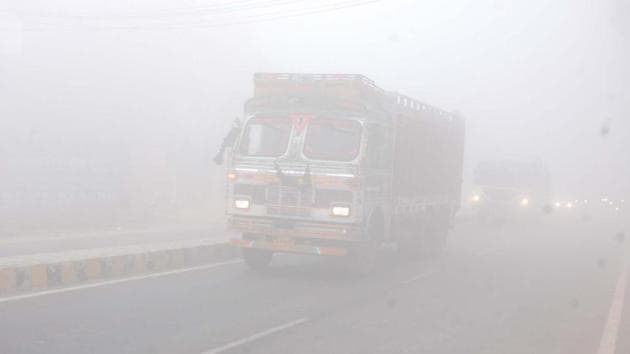Haryana’s air quality reaches dangerous level, pollutants twice than last year
100 brick kilns shut in Rohtak; 30% dip in number of migratory birds flock sanctuaries, water bodies; experts blame stubble burning
With the state engulfed in a toxic haze for the past one week, air pollution this time has reached hazardous level which is two times higher than last year’s, prompting the administration to take a slew of measures to bring life back to normal.

The air quality index in Rohtak— one of the four districts in the state where the government has set up real-time air monitoring centres — has been hovering around 420 (hazardous level). On Sunday, it touched 487, worse than most parts of the national capital and Gurgaon.
There was a dip in the number of migratory birds flocking the state’s sanctuaries and water bodies during this time of the year, a forest official said.
A pollution control board report said that AQI in Charkhi Dadri and adjoining areas was 471 on Monday. On normal days, the AQI is usually between 40 and 80 (optimal level) in these areas.
The data shows last year during similar period when the state was engulfed in toxic smog, the AQI at Rohtak centre was around 200.
Rohtak deputy commissioner Yash Garg said to control the pollution, more than 100 brick kilns have been shut in the district while construction work has been stopped. He said heavy vehicles carrying only essential commodities were being allowed to enter the city.
“It will be wrong to say that Haryana’s situation is worse than Delhi going by just one random reading. But it is still quite bad. If the situation does not improve soon, we will be forced to announce traffic restrictions in Rohtak just like Delhi had in the past,” Garg said.
Experts, however, mainly blamed stubble burning and not automobiles or industries for the killer smog. “The only reason behind smog is excessive burning of paddy residue,” said Mohammad Kashif, an environment scientist and assistant professor at Chaudhary Devi Lal University.
“According to research, there are no big industries in Sirsa, Fatehabad or Hisar. So, the reason behind smog here cannot be emissions from industries. The atmospheric condition right now is not suitable and due to low atmosphere pressure and moisture in the air leads to dense smog in isolated area,” Kashif said.
Notably, several incidents of stubble burning came to light in the last one week in Sirsa and Fatehabad districts. Fatehabad DC Hardeep Singh warned farmers that stubble burning was being observed by the Haryana Space Applications Centre (HARSAC) from space and all such activities carried during night time were also being monitored.
Sundar Sambhariya, district forest officer at Jhajjar, said there was a 30% decrease in the number of migratory birds that used to flock several sanctuaries and water bodies in Haryana during this time of the year. Experts said the smog was causing eyes and lungs problems to people in Haryana, advising asthma patients to stay indoors till the air quality gets better.





